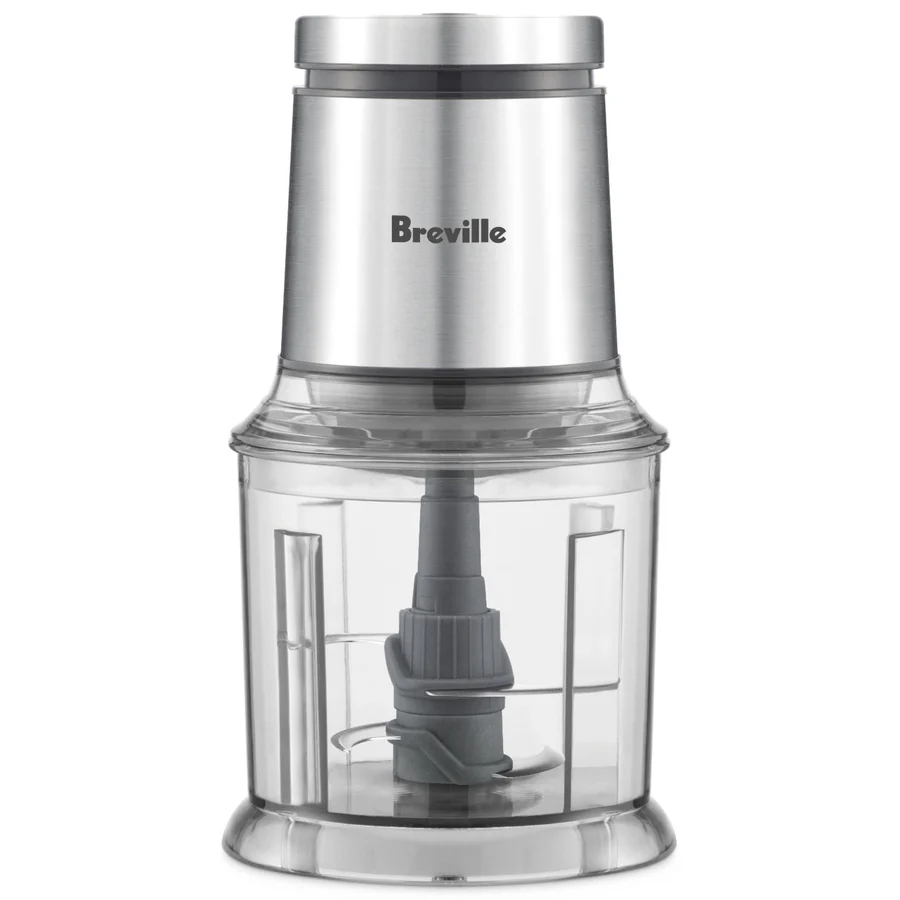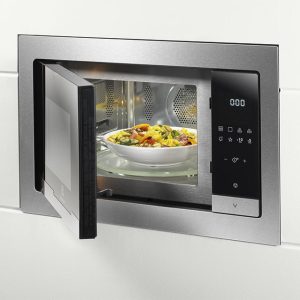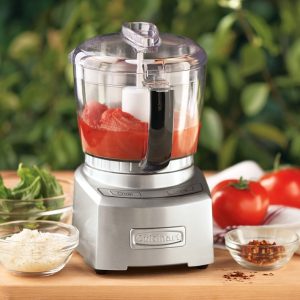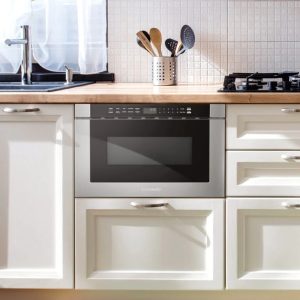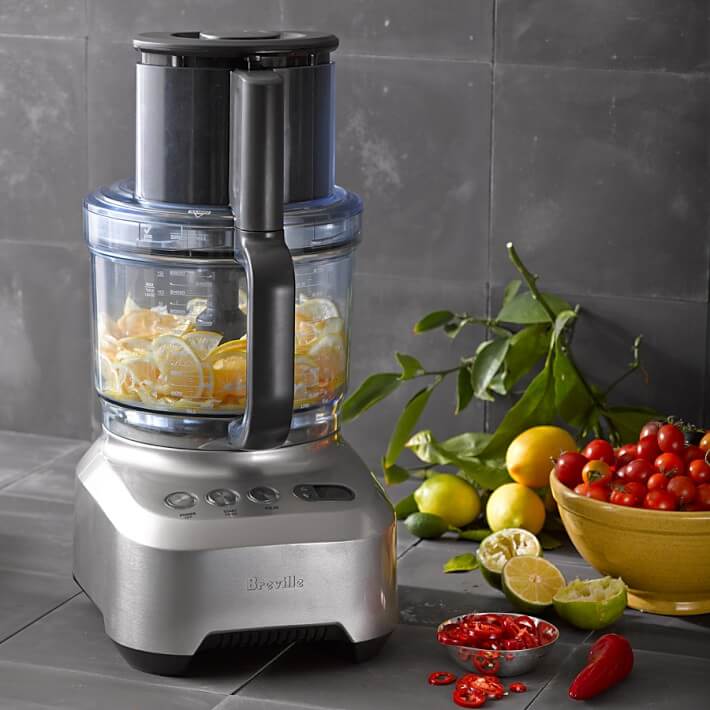
A food processor is an essential kitchen appliance that simplifies meal preparation, allowing you to chop, slice, dice, and puree with ease. The Breville food processor stands out due to its performance, versatility, and design. This manual aims to provide you with in-depth information about your Breville food processor, covering everything from setup and usage to maintenance and troubleshooting.
Understanding Your Breville Food Processor
Before diving into the specifics of operation and features, it’s important to familiarize yourself with the basic components of your Breville food processor.
Key Components
- Bowl: The large container where food is processed. Breville food processors usually come in varying capacities, suitable for both small and large batches.
- Lid: The lid secures onto the bowl and ensures that the contents do not spill during operation. Many models have a locking mechanism to prevent accidental opening.
- Feed Tube: This is the opening on the lid, allowing you to add ingredients while the food processor is in operation. Some models feature a wide feed tube to accommodate whole vegetables.
- Blades and Discs: Different blades and discs allow you to perform various tasks, including slicing, shredding, chopping, and kneading dough.
- Motor Base: The base houses the motor and has controls for operation. This component is critical as it drives the blades and performs the actual food processing.
- Control Panel: Most Breville food processors have a user-friendly control panel with multiple speed settings and pulse options.
Understanding these components helps in navigating the Breville food processor manual and enhances your cooking experience.
Setting Up Your Breville Food Processor
Setting up your Breville food processor is a straightforward process, but it is imperative to follow the guidelines to ensure safe operation.
Step-by-Step Setup
- Choose a Stable Surface: Place your food processor on a clean, dry, and stable countertop away from the edges.
- Assemble the Bowl and Lid: Align the bowl on the motor base, ensuring that it locks into place. Attach the lid securely, making sure it fits snugly.
- Insert the Blade or Disc: Carefully select the blade or disc suited for your task. Always handle sharp components with caution. To attach, align the stem with the center opening of the bowl and twist until it locks.
- Plug In: Insert the power cord into a suitable electrical outlet.
- Check the Controls: Familiarize yourself with the buttons and settings on the control panel before operation.
Safety Precautions
Safety should always be your top priority when using a food processor:
- Ensure the lid is securely locked before operating the machine.
- Keep hands and utensils away from the feed tube and blades while the processor is in use.
- Turn off and unplug the processor before changing blades or removing the bowl.
- Regularly check the power cord for any signs of damage.
Using Your Breville Food Processor
Now that your food processor is set up, it’s time to put it to work! Below are various functions your Breville food processor can handle.
Common Food Processing Tasks
- Chopping Vegetables: Add your vegetables into the bowl and pulse for quick chopping. This is perfect for preparing bases for soups, stews, or salads.
- Slicing: Use the slicing disc to create uniform slices of fruits, vegetables, or cheeses for salads or garnishes.
- Grating and Shredding: The shredding disc is excellent for grating cheese or shredding vegetables for coleslaw.
- Making Dough: Many Breville models come with a dough blade. By adding flour, water, and your desired ingredients, you can create bread or pastry dough in mere minutes.
- Pureeing: For soups or sauces, add cooked ingredients and process them until you reach the desired texture.
- Emulsifying: Perfect for dressings and spreads, you can make mayonnaise or hummus in seconds by slowly adding oil through the feed tube.
Tips for Best Results
- Cut Ingredients Evenly: For optimal processing, cut larger foods into smaller, uniform pieces.
- Use the Right Blade: Always select the appropriate blade or disc for the task at hand.
- Don’t Overfill: Always leave some space in the bowl to ensure even processing.
- Timing: Keep an eye on your processing times. Pulsing can be useful in controlling the texture you want.
Cleaning and Maintenance of Your Breville Food Processor
To prolong the life of your food processor, regular cleaning and maintenance are essential.
Cleaning Your Food Processor
- Unplug and Disassemble: Always unplug the food processor before cleaning. Remove the lid, bowl, and blade or disc.
- Clean Removable Parts: Most removable components are dishwasher-safe. However, a gentle hand wash with soap and water is also effective.
- Wipe the Motor Base: Use a damp cloth to wipe the motor base. Avoid submerging it in water.
- Inspect for Food Residue: Make sure no food bits are stuck in the blade or bowl after washing. A soft brush can help in hard-to-reach areas.
- Dry Thoroughly: Ensure all parts are completely dry before reassembling to prevent any moisture-related issues.
Maintenance Tips
- Regularly Check the Blades: Make sure the blades are sharp and not dulled. Dull blades may not perform effectively and could pose a safety risk.
- Inspect the Power Cord: Look for any wear and tear on the power cord and replace it if necessary.
- Store Properly: When not in use, store your food processor in a dry place. If possible, keep all attachments in one designated area for easy access.
Troubleshooting Common Issues
Despite the durability and reliability of Breville food processors, issues can occasionally arise. Here are some common problems and solutions.
Food Processor Won’t Start
- Check Power Connection: Ensure it’s plugged in properly and that the outlet is functional.
- Lid Not Secure: Most models have safety features that prevent operation if the lid or bowl isn’t locked in place.
Uneven Processing
- Too Much Food: Ensure you’re not overfilling the bowl. If ingredients aren’t chopping evenly, reduce the amount you’re processing.
- Incorrect Blade: Make sure you’re using the right blade or disc for the specific task.
Loud Noise During Operation
- Check for Obstructions: Stop the machine and inspect for any objects that may be jamming the blades.
- Regular Maintenance: Ensure blades are well-lubricated and that there are no loose parts.
Blades Not Rotating
- Power Issues: Verify that the power outlet is functioning.
- Motor Base Problems: If both the power and connection are fine, seek professional assistance.
 Exploring Advanced Recipes with the Breville Food Processor
Exploring Advanced Recipes with the Breville Food Processor
Once you’re comfortable with basic operations, consider experimenting with some advanced recipes to fully utilize your Breville food processor.
Homemade Nut Butters
To make your own nut butter, simply place your choice of nuts (peanuts, almonds, or cashews) into the food processor. Start with a few cups of nuts, processing until smooth, which usually takes several minutes. You can tailor flavors by adding sweeteners, cocoa, or spices.
Fresh Salsa
Create vibrant salsas by chopping tomatoes, onions, and chilies in your food processor. Add lime juice and cilantro for a refreshing twist. Adjust the processing time for chunky or smooth textures depending on your preferences.
Crepes or Pancake Batter
Combine ingredients for your favorite crepe or pancake batter using the food processor. It’s quick, and the blades help amalgamate the ingredients for an even consistency, which is essential for successfully flipping crepes.
Homemade Ice Cream
Using your food processor, you can turn frozen bananas into delicious ‘nice cream.’ Simply slice ripe bananas, freeze them, and then process until creamy. You can add cocoa for chocolate flavor or peanut butter for a nutty twist.
Bread Crumbs
Turning stale bread into crumbs is a great way to reduce waste and enhance your dishes. Cut the bread into smaller pieces, feed them into the food processor, and pulse until you get the desired texture.
Conclusion
In summary, your Breville food processor is a robust kitchen tool that streamlines cooking and food preparation. This Breville food processor manual covers everything from setup to advanced recipes, ensuring you have the knowledge to maximize your appliance’s potential. Regular maintenance, understanding its capabilities, and experimenting with various applications can make your cooking experience both enjoyable and efficient. So, dive into the world of culinary possibilities with your Breville food processor!
